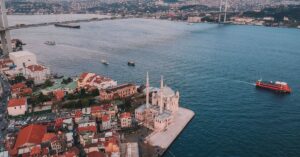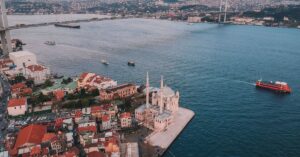
Indian Court Orders Arrest Of MV MSC Palermo To Secure Claims Related To MSC Elsa 3
August 14, 2025
Protests Erupt In Greek Port City of Volos After Arrival Of Israeli Cruise Ship
August 14, 2025

According to a recent study, mariners in the Bering Strait are following 2018 shipping guidelines, which suggest a quiet form of U.S.-Russia cooperation despite strained political relations.
The study was conducted by researchers at the University of Alaska Anchorage and Michigan State University who analysed the transit data from 2015 to 2022 and found good adherence to recommended shipping lanes and areas to be avoided.
The IMO, a U.N. agency, established the rules and guidelines in 2018, based on a joint-US-Russia initiative.
Izabella R. Block, the lead author of the study, found the adherence to the voluntary measures to be encouraging.
The study found that cargo vessels, tugs, and tankers show a noticeable shift away from sensitive ecological areas.
It also showed that ships which transit the region more frequently are more likely to abide by the rules.
The Bering Strait is a vital passage for marine mammals and migratory birds and has seen a dramatic increase in ship traffic, from 242 transits in 2010 to 665 in 2024.
Despite the increase, the political relations between the U.S and Russia have deteriorated, especially after the Russian invasion of Ukraine, which has led to a nosedive in cooperation and exchanges, along with Russia’s exclusion from Forums such as the Arctic Council.
Mike Sfraga, former U.S Arctic ambassador, has expressed his concern that a lack of communication could lead to disasters such as an oil spill, which would have drastic effects on local indigenous communities.
Experts such as John Holdren, former senior science adviser to President Barack Obama, said there are some reasons for hope for continued cooperation. He pointed out that even during the Cold War period, the U.S and the Soviet Union found common ground on safety and conservation issues.
Block suggested that a logical next step could be to expand protections in the strait, like creating a designated area to be avoided around the Diomede Islands.
She also cited input from residents of Little Diomede who report that increased ship traffic close to the island has altered the state of the beach.
Source: Maritime Shipping News


